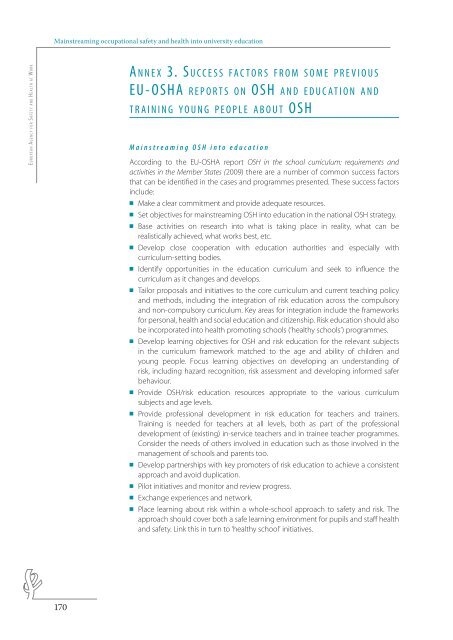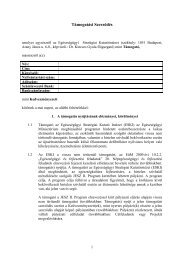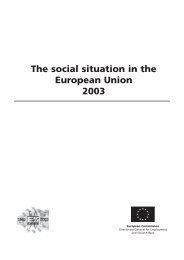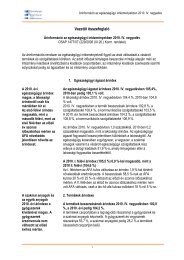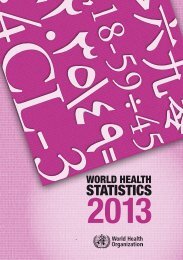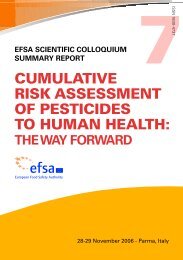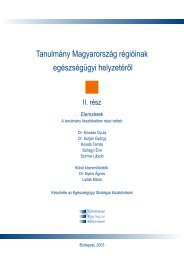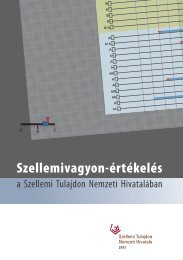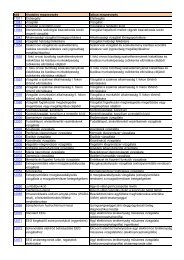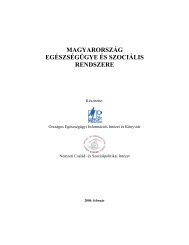Mainstreaming occupational safety and health into university ...
Mainstreaming occupational safety and health into university ...
Mainstreaming occupational safety and health into university ...
You also want an ePaper? Increase the reach of your titles
YUMPU automatically turns print PDFs into web optimized ePapers that Google loves.
<strong>Mainstreaming</strong> <strong>occupational</strong> <strong>safety</strong> <strong>and</strong> <strong>health</strong> <strong>into</strong> <strong>university</strong> educationE u r o p e a n Ag e n c y f o r Sa f e t y a n d He a l t h a t Wo r kA n n e x 3. Su c c e s s f a c t o r s f r o m s o m e p r e v i o u sEU-OSHA r e p o r t s o n OSH a n d e d u c a t i o n a n dt r a i n i n g y o u n g p e o p l e a b o u t OSH<strong>Mainstreaming</strong> OSH <strong>into</strong> educationAccording to the EU-OSHA report OSH in the school curriculum: requirements <strong>and</strong>activities in the Member States (2009) there are a number of common success factorsthat can be identified in the cases <strong>and</strong> programmes presented. These success factorsinclude:OO Make a clear commitment <strong>and</strong> provide adequate resources.OO Set objectives for mainstreaming OSH <strong>into</strong> education in the national OSH strategy.OO Base activities on research <strong>into</strong> what is taking place in reality, what can berealistically achieved, what works best, etc.OO Develop close cooperation with education authorities <strong>and</strong> especially withcurriculum-setting bodies.OO Identify opportunities in the education curriculum <strong>and</strong> seek to influence thecurriculum as it changes <strong>and</strong> develops.OO Tailor proposals <strong>and</strong> initiatives to the core curriculum <strong>and</strong> current teaching policy<strong>and</strong> methods, including the integration of risk education across the compulsory<strong>and</strong> non-compulsory curriculum. Key areas for integration include the frameworksfor personal, <strong>health</strong> <strong>and</strong> social education <strong>and</strong> citizenship. Risk education should alsobe incorporated <strong>into</strong> <strong>health</strong> promoting schools (‘<strong>health</strong>y schools’) programmes.OO Develop learning objectives for OSH <strong>and</strong> risk education for the relevant subjectsin the curriculum framework matched to the age <strong>and</strong> ability of children <strong>and</strong>young people. Focus learning objectives on developing an underst<strong>and</strong>ing ofrisk, including hazard recognition, risk assessment <strong>and</strong> developing informed saferbehaviour.OO Provide OSH/risk education resources appropriate to the various curriculumsubjects <strong>and</strong> age levels.OO Provide professional development in risk education for teachers <strong>and</strong> trainers.Training is needed for teachers at all levels, both as part of the professionaldevelopment of (existing) in-service teachers <strong>and</strong> in trainee teacher programmes.Consider the needs of others involved in education such as those involved in themanagement of schools <strong>and</strong> parents too.OO Develop partnerships with key promoters of risk education to achieve a consistentapproach <strong>and</strong> avoid duplication.OO Pilot initiatives <strong>and</strong> monitor <strong>and</strong> review progress.OO Exchange experiences <strong>and</strong> network.OO Place learning about risk within a whole-school approach to <strong>safety</strong> <strong>and</strong> risk. Theapproach should cover both a safe learning environment for pupils <strong>and</strong> staff <strong>health</strong><strong>and</strong> <strong>safety</strong>. Link this in turn to ‘<strong>health</strong>y school’ initiatives.170


